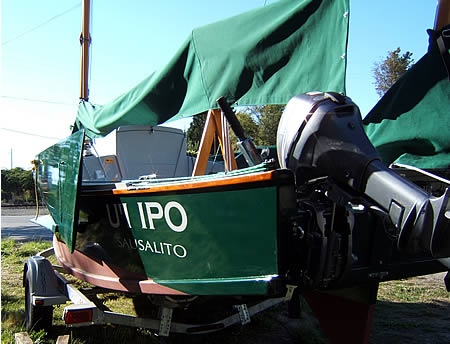
We moved the boat outside to put up the rig and fit sail covers and took the opportunity to snap the first few exterior photos. The boat's name is partially hidden in the leeboard shadow. It is U'I IPO. The leeboards are up in the trailering position, resting on the leeboard "wings." They are never raised this high when sailing. The yard, sprit, and sail are beneath the sail cover. The tackle for raising the leeboard is visible just above the aft portion of the guard.
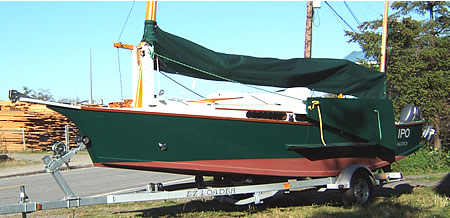
Portside, same day. Some rope tails hang from the leeboards because we won't cut these lines to exact length until after sailing her.
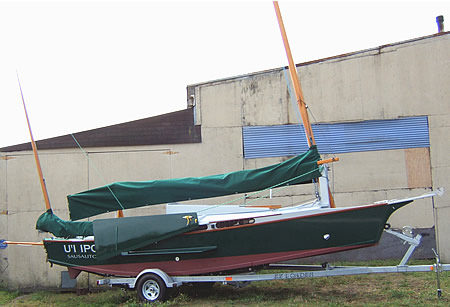
And from starboard, same day. What looks like a wood hatch cover on the cabin top is actually a protective cover for the solar panel. It's very helpful to be able to step on it when raising and lowering the mast. It's quite easy to raise and lower the mast with some help from the halyard winch, taking the main halyard through the anchor roller. The stainless cowl vent in the bow covers the drain hole for the forward well deck. The boat fits quite well on a very slightly customized roller boat trailer.
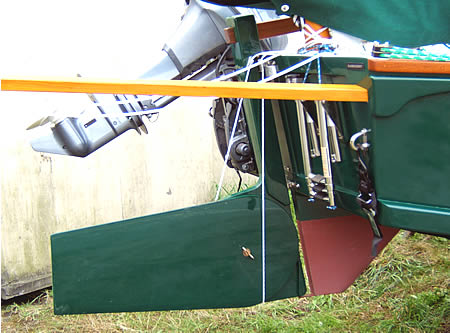
Detail of the rudder blade in the "up" position. One string holds it up and one string holds it down. A giant wing nut adjusts the pivot friction. An emergency boarding ladder is shown in the stowed position to starboard of the rudder.
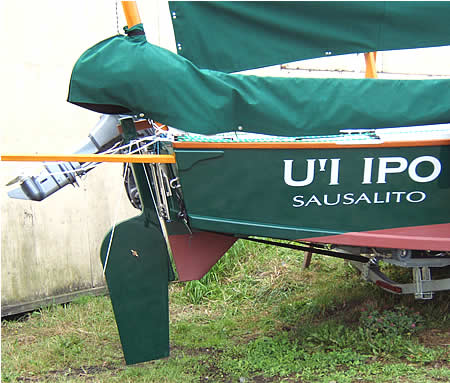
And rudder blade down. The mizzen sail cover is made so that the mizzen sprit and sail can be stowed either inboard or outboard, depending on whim and space available. The boomkin is easily removable.
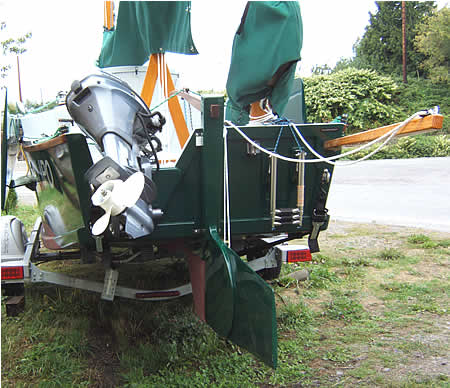
Another shot from the stern, showing more general detail. That's a stern light between the rudder and ladder. The little white block on the transom behind the rudder is a rudder stop to keep the rudder from getting into the auxiliary's prop when it's running.
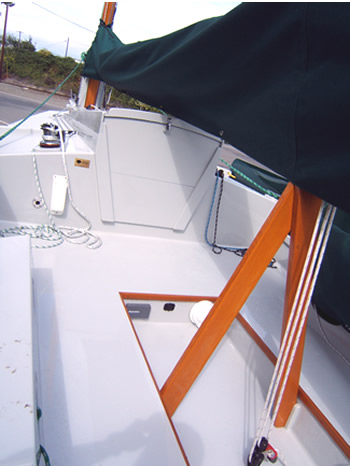
Looking into the cockpit. A depth sounder/knotmeter, a compass, and a 12v outlet are in the little bulkhead at the forward end of the footwell.
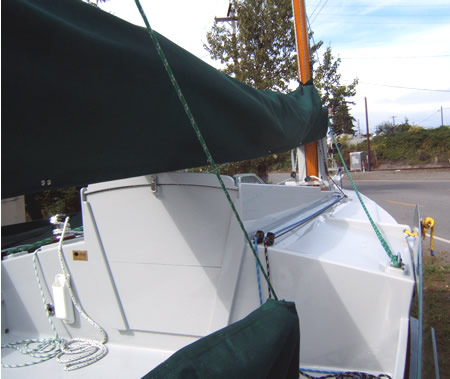
A similar view from the starboard side. The sprit topping lift and the snotter tackle line come down the starboard side of the cabin top. The main halyard and tack downhaul come to the winch on the port side.
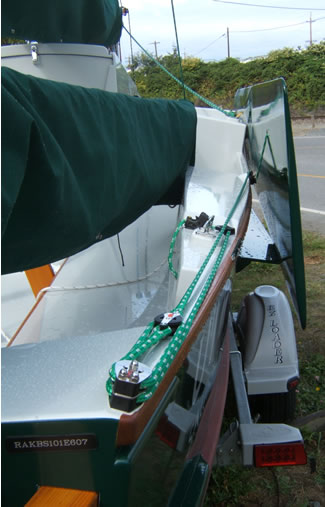
Here's a decent view of the leeboard tackle. The leeboard control line goes up the to leeboard because it's holding the leeboard in the trailering position. When the leeboard is in use, that control line will of course go down to the hanging leeboard.
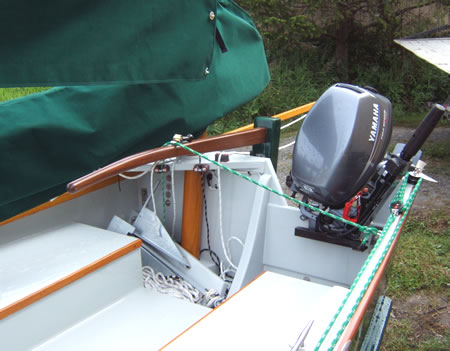
A view of the aft portion of the cockpit. A stern anchor and its rode are stowed just forward of the mizzen mast step. A tiller lock on top of the tiller will lock onto that green line so that a single hander can take care of things.
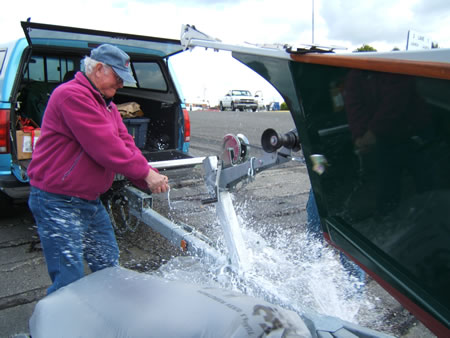
Yep, that's a breaking champagne bottle. Launch day! After spending lots of frustrating time removing glass from the decks, we now just break the bottle on the trailer. As long as the boat gets a drink, she's good with it. Bob does a splendid job here, bare handed! We put plastic sheeting on the ramp for obvious reasons.
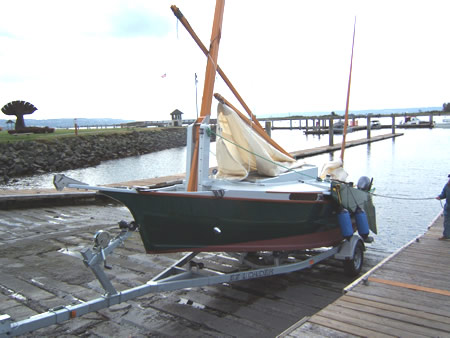
There she goes down the ramp.
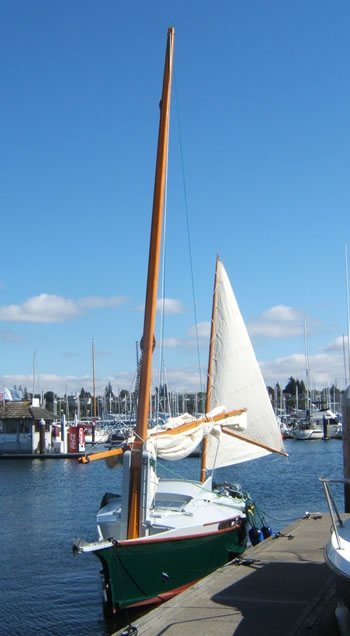
At the dock, floating on her lines.
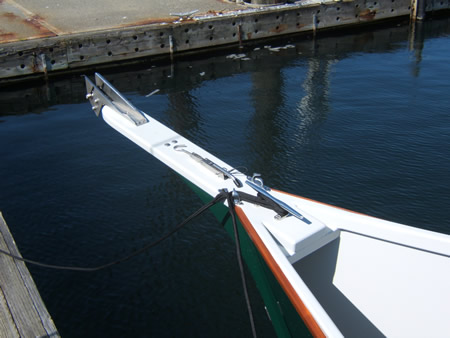
Now for some detail shots. We didn't rig a jib, so we used the bowsprit for anchor storage. A Bruce anchor stows on the roller and an anchor chain tensioner holds the anchor securely. To raise the mast, we run the halyard over the anchor roller and then back through its regular leads to the cabin top winch. One has to get the mast started up by hand, but once it's head high, the winch takes over and hoists it smoothly into position. No drama.
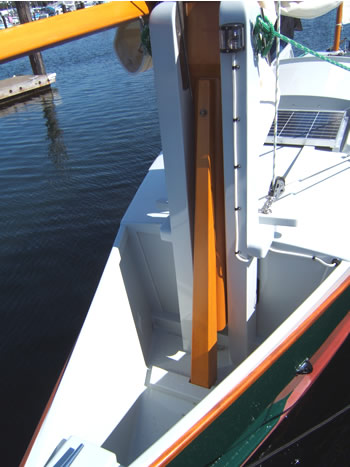
This is a detail of the forward side of the tabernacle. We notice particularly the steaming light and the locking staff that holds the mast in position. Bolger says "lash or pin" the staff in position. We elected to run a bronze bolt right through the staff and mast. This is one piece of equipment that cannot be allowed to fail.
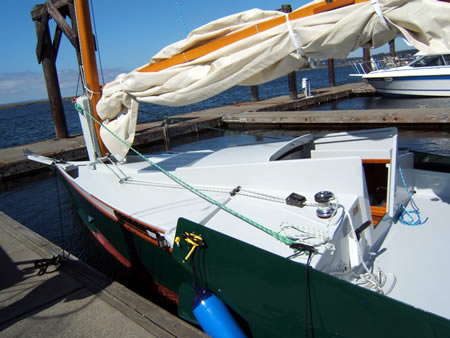
We brought the halyard and main tack downhaul down the port side, through some fairlead blocks, a double rope clutch, and then to a Harken #16 winch. You don't adjust the luff tension with the halyard like on a conventional boat. You run the yard up until it comes tight against the mast and then you apply luff tension with the downhaul. The green lines running from the cleat on the tabernacle to the midships spring cleat are safety lines. Harness lines can be clipped to them for rough weather work or then can just be used for handholds.
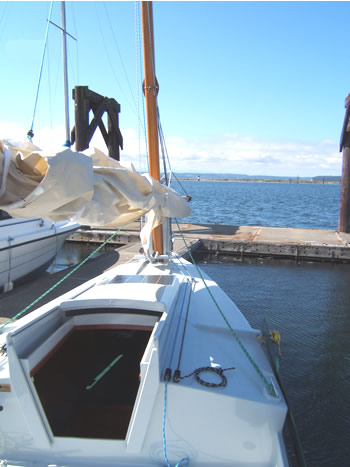
The snotter tackle line and the sprit topping lift run down the port side of the cabin top, ending in small rope clutches. The main snotter is a three part tackle. You need tackle to be able to flatten that big sail.
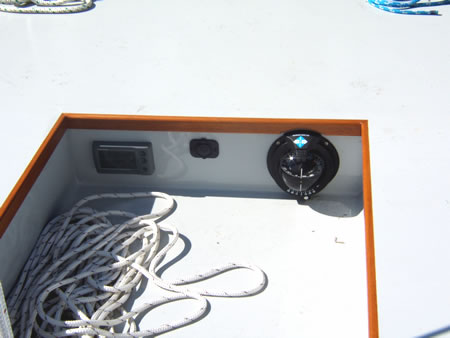
We installed a compass, a combination knotmeter and depth sounder, and a 12v outlet in the little bulkhead at the forward end of the footwell. The outlet will provide power for a searchlight and a portable anchor light, there being no good place to rig a permanent one.
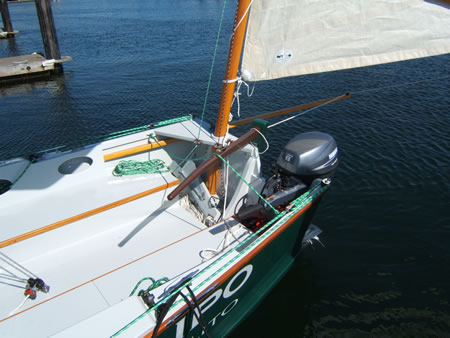
The aft end of the cockpit. The mizzen halyard, snotter, and mizzen sheet lead through cam cleats on the mast knee. The mizzen luff is also tensioned by the downhaul, not the halyard.
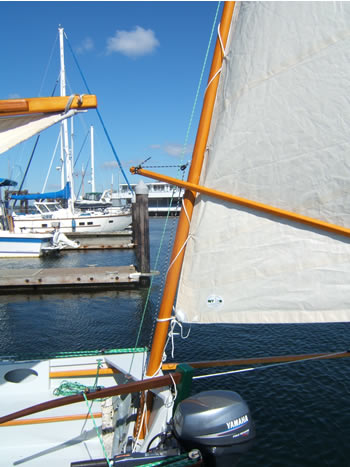
The mizzen snotter is single part. Note that the mizzen lacing is back and forth, not round and round. Back and forth lacing allows the mizzen to go up and down the mast easily.
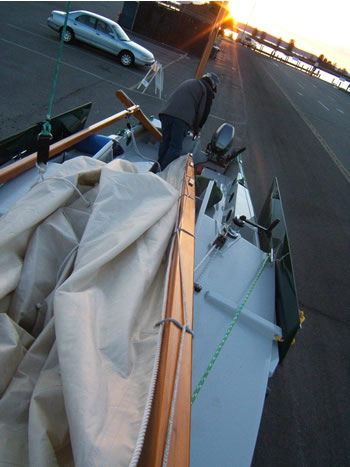
It's the end of the day and we're taking the rig down for trailering. This photo shows how the main is laced to the yard. We used this type of lacing because the sail doesn't go up and down the yard. The yard just goes up and down the mast. The lacing also holds the head of the sail to the top of the yard and is 6mm Dyneema, which is worth about 7000 lbs. Ought to be strong enough.
The halyard is hanging on the left in this photo. It's made of Warpspeed, a braided line with a 6mm Dyneema core. The cover was stripped for about 25 feet and the core backspliced to form a 6" eye. A Tylaska spool shackle attaches this eye to the D-rings sewn in the seat belt webbing, which passes around the yard. This arrangement allows the yard to be pulled very close to the masthead sheave.
|



